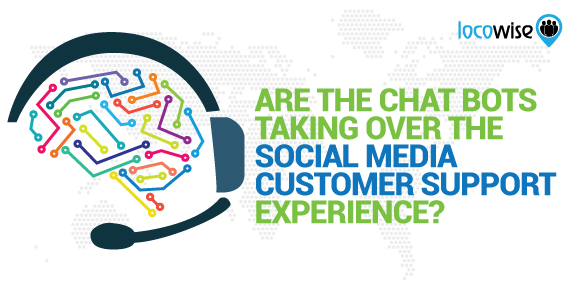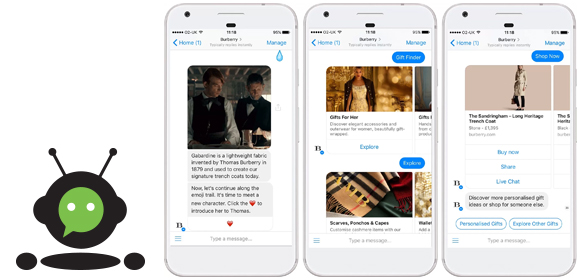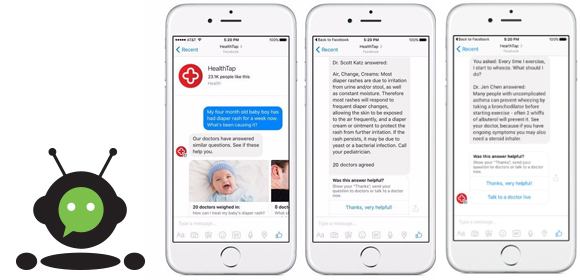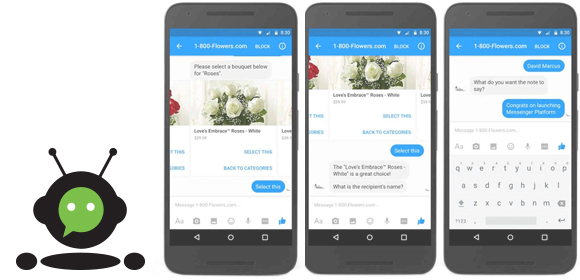Are The Chat Bots Taking Over The Social Media Customer Support Experience?
Sahail Ashraf posted on 9 March 2017
There is a lot of talk flying around at the moment regarding robots and how they are eventually going to steal everybody’s job. This may not happen (but we think something very close to it will), but one of the most obvious points of impact that bot technology is having in social media concerns the chatbot experience.
Whether they are used to offer basic customer service or to spark up ‘real’ conversations with customers, chatbots are not going away, and they are actually proving to be quite a hit with the public. Rather than intimidating people or making the buying experience seem artificial, they are instead bringing value.

Retale and what it found
Retale is an advertising provider, and a recent report from them drilled down into the impact of chatbots. You can find an article here that details what was discovered. The main points are actually rather surprising. You may love chat bots or think they are a waste of time, but shoppers are feeling the love.
Perhaps the biggest vindication from a marketing point of view is the response to the question ‘should chatbots promote deals, products or services?’ This is the core reason why chatbots are truly useful to a brand, and done right, it can create sales. With 86% of respondents in the study agreed that chatbots had this as a legitimate role, it is clear that what may have initially worried marketers (that chatbots may be spammy) has actually turned into a valuable part of the customer experience.
Burberry is perhaps one of the perfect examples when it comes to chatbots helping launch products or promotions, or events. This kind of work showed up in headlines late last year. By bringing a bit of exclusivity to the chatbot experience (imagined or real, it doesn’t matter) Burberry tapped into an excellent and creative way of using chatbots. And 86% of respondents for Reale backs this up.

What customers want
This is the key aspect of the research, and pretty much what brands need to know either before they launch a chatbot or bring a new iteration to an existing one.
The biggest area for improvement among chatbots (and this is perhaps not that surprising) is to improve the accuracy of the things. This means that customers may be enjoying using chatbots, but there are still kinks to be ironed out as regards to the correct and natural response that the bot has. A considerably relevant 55% of respondents thought that having more accuracy would lead to a better experience.
You could look at that in a different way and say that half of the userbase will think chatbots are accurate enough. But obviously, brands need to focus on making them more effective in this area if they are to improve the overall experience.
And perhaps it’s a sign of the times that customers want chatbots to provide a more natural approach. This is a positive thing. While customers are most likely quite aware that they are talking to a piece of code, it is encouraging for brands to bring a more satisfying interaction.
Some of the best chatbots around right now
Chatbots can be excellent and add value to the customer experience. Perhaps the very best example we have seen in recent times is one that users can install onto Facebook Messenger. Healthtap is a medical chatbot, in that it allows people to receive some primary care without leaving their home.
Users of the service can literally share their symptoms with the chatbot and then receive recommendations from doctors. It also allows users to have their test results assessed. And if all else fails and a doctor is required, the bot refers you to one within the service.
If anything, Healthtap is perhaps the best example of how chatbots can offer customer service. Even though the bot is limited in natural responses just as all bots are right now, it still leads to a proper human interaction if required. This is basically triage through a chatbot.

1-800 Flowers
This bot is an old one, but it consistently shows newer bots how things should be done. The bot asks you right at the start of things if you want to buy flowers (naturally) or talk to a customer representative. But it doesn’t end there.
The bot has gained fame simply because the error element is largely absent. You can even type in an address without using commas and it will still bring up the correct location.
This bot works on the levels of accuracy, ease of use and efficiency. It gets you to where you want to be with your purchase within seconds. And it handles customer information impeccably.

Taking it to the next level
Many bands are looking at chatbots and planning to release their own. Some key aspects need to be noted though, before a brand jumps in.
Speed of processes is vital. You can’t really consider making a bot that takes a long time to get to the customer needs. The flowers bot above scores points because it gives customers that immediate experience. Are you buying flowers or do you want customer service? By doing this it justifies the entire chatbot rationale: speed up the customer experience.
Natural please
When it comes to that all important ‘natural’ feel that so many customers expect, there are a couple of things your bot can do to overcome the ‘artificial’ thing.
Use humour. While chat bots are automated and exist merely to serve (just like a… robot) they still need to crack a joke or two to make a customer feel at home. A purchase is a purchase, and customers expect to feel like the bot has some human qualities, such as humor.
If you can organise it so that a chatbot makes the most mundane and annoying experiences lighter, that too will bring you a situation where natural interactions feel genuine.
You have probably helped to create a chatbot for your clients or for your own brand, but agencies need to bring ROI, and a chatbot that doesn’t work is not ROI. Retale has now proven that chatbots are a vital part of the customer sales cycle, and it’s up to agencies and their clients to decide whether or not full delivery is possible.
So while bots are not taking our jobs (well not all of them) they are certainly taking over customer interactions.





